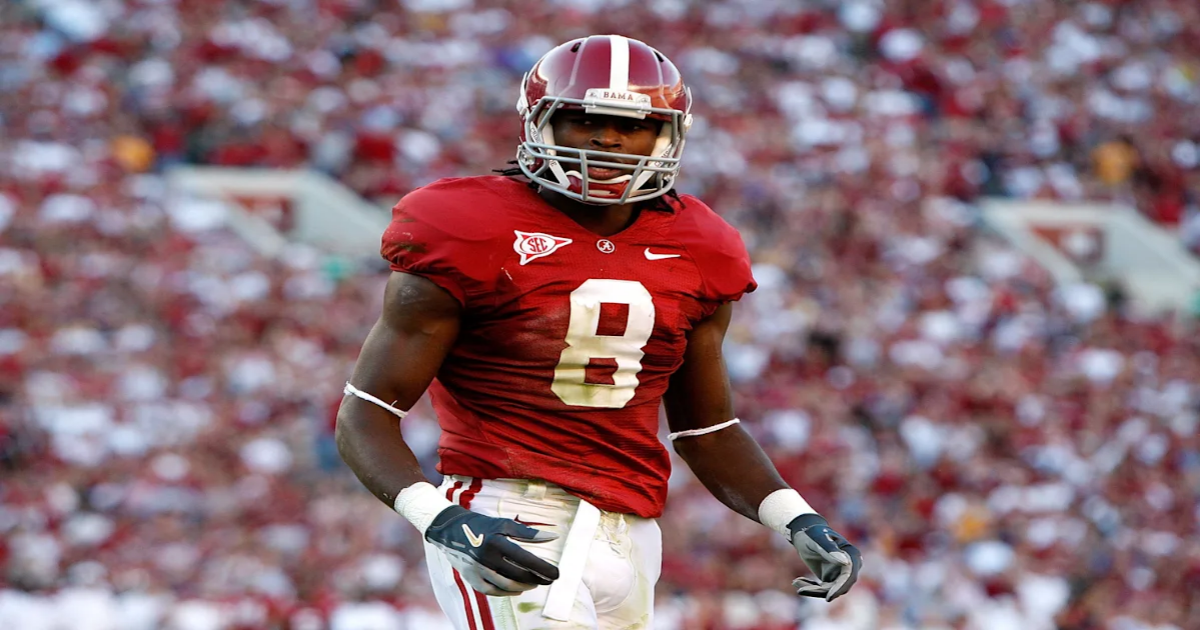After 13 NFL seasons that add up to a Pro Football Hall of Fame resume, Julio Jones called it a career Friday. When that journey began, the Atlanta Falcons traded up from the No. 27 pick to the No. 6 pick of the 2011 NFL Draft, at a franchise-mortgaging price of two first-round picks, a second-rounder, and two fourth-rounders, to take Jones.
And never regretted it for a day.
Advertisement
Advertisement
Over 10 seasons in Atlanta, he averaged more than 1,000 receiving yards per year, went to seven Pro Bowls, and led the beleaguered franchise to just its second Super Bowl appearance in 59 seasons. And yet, it can’t be said that he made a greater impact as a pro than he did for Alabama football.
He was the undisputed gem of former coach Nick Saban’s fabled 2008 signing class, which went on to anchor multiple national championships. That’s a mouthful, considering that class included four other future first-round draft picks: Mark Ingram, Mark Barron, Dont’a Hightower and Marcell Dareus. But while all those players were highly productive on the field, none of them helped Saban transform the program’s culture more than Jones did.
QB BATTLE: Is decision coming in Alabama football quarterback battle? What Kalen DeBoer said after scrimmage
GOODBREAD: Injuries justify Kalen DeBoer’s decision to scrap Alabama football A-Day game
Advertisement
Advertisement
Saban plucked the five-star prospect, a true mega-talent, right out of a part of the state that had previously been under Auburn recruiting control. And upon arrival as a freshman, his work ethic and wholesale commitment to the sport meshed perfectly with what Saban needed in an example-setting leader. It was senior-level maturity right from his first college practice.
In short, Jones was the apex of Saban’s program turnaround in 2008.
Over three seasons with the Crimson Tide, including a 2009 national title, Jones changed how the wide receiver spot at Alabama is defined. He repositioned it from a role that had always contributed in a complimentary way to the running game to one that could carry the offense, at a program that for decades prior was built on a stout rushing attack. Before Jones, Alabama’s history of first-round draft picks at wide receiver began with Dennis Homan and ended with Ozzie Newsome, without a soul in between; Newsome was later converted to tight end in the NFL. Since Jones, Alabama has had seven receivers drafted in the first round, all explosive playmakers in an Alabama offense that Saban modernized more than once.
But it was Jones who altered the trajectory of the position.
Advertisement
Advertisement
He had no tolerance for the notion that wide receivers specialize in one role or another. So many modern receivers, even very good ones, acquiesce to various labels: speedy deep-threat guy, slot guy, fearless over-the-middle guy. Jones excelled at all that and more, with a 6-foot-3, 220-pound frame that dragged tacklers when he had the ball and obliterated them as a blocker when he didn’t.
All while outworking everyone else in the UA wide receiver room.
Former UA defensive back Will Lowery, who had the no-fun task of covering Jones in practice, took to x.com for his summary of Jones’ impact on the program, noting “If God were to craft the prototype WR physically, he would present Julio Jones.”
That’s a fact.
Advertisement
Advertisement
And if He were to craft a prototype culture changer, he’d pick Jones for that, too.
Tuscaloosa News sport columnist Chase Goodbread.
Tuscaloosa News columnist Chase Goodbread is also the weekly co-host of Crimson Cover TV on WVUA-23. Reach him at [email protected]. Follow on X.com @chasegoodbread.
This article originally appeared on The Tuscaloosa News: Defining Julio Jones’ Alabama football legacy upon his NFL retirement

